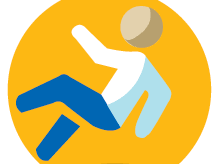Older adults can save tens of thousands of dollars annually by choosing assisted living communities over aging in place in their homes.
Unlike point solutions, Inspiren unifies resident safety, care planning, staffing, and emergency response into a single AI-powered platform.
An artificial intelligence-powered virtual assistant platform for senior living and care providers.
Betting that AI could lighten the clinician load.

 Most consumers might say that they would appreciate greater tech ease of use. But is that what they get? The tech industry’s fondness for innovation (see
Most consumers might say that they would appreciate greater tech ease of use. But is that what they get? The tech industry’s fondness for innovation (see  What caught our attention in 2024 in the older adult aging and health tech market? By the end of the year of 2024, heading into CES 2025, AI, or at least the term ‘AI’ has caught the eye of all, from
What caught our attention in 2024 in the older adult aging and health tech market? By the end of the year of 2024, heading into CES 2025, AI, or at least the term ‘AI’ has caught the eye of all, from  Each of several recent years, AARP has surveyed older adults about tech use. This year’s
Each of several recent years, AARP has surveyed older adults about tech use. This year’s  Kudos to AARP - life expectancy impacts tech adoption. For the first time in their published research, AARP’s
Kudos to AARP - life expectancy impacts tech adoption. For the first time in their published research, AARP’s  The WSJ article circles the problem. When 41,000 older adults die as a result of falls each year at a cost of $80 billion (
The WSJ article circles the problem. When 41,000 older adults die as a result of falls each year at a cost of $80 billion (